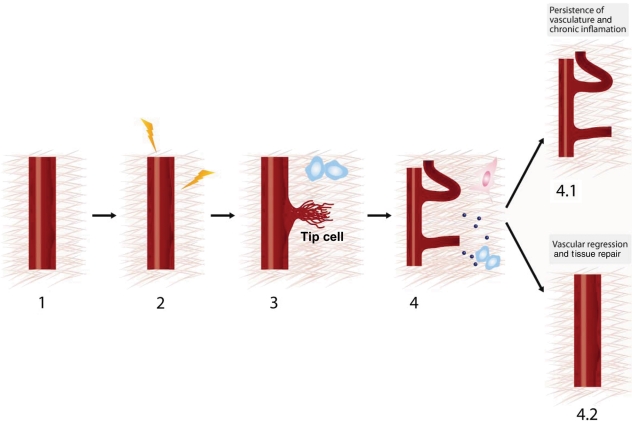Figure 1.
Progressive steps in inflammation-driven angiogenesis. (1) Quiescent vasculature. (2) Inflammation induced by systemic or local sources activates the angiogenic program by increasing vessel permeability and destabilizing EC junctions. (3) Proteolysis of the ECM by the endothelial tip cell during capillary sprouting induced by inflammatory stimuli. (4) ECM-driven mechanical forces, ECM-derived cryptic sites and matrikines, and growth factor signals during inflammation-mediated angiogenesis. Inflammation-induced angiogenesis can have two distinct fates: 4.1, persistence of vasculature and chronic inflammation and 4.2, vascular regression and tissue repair.

